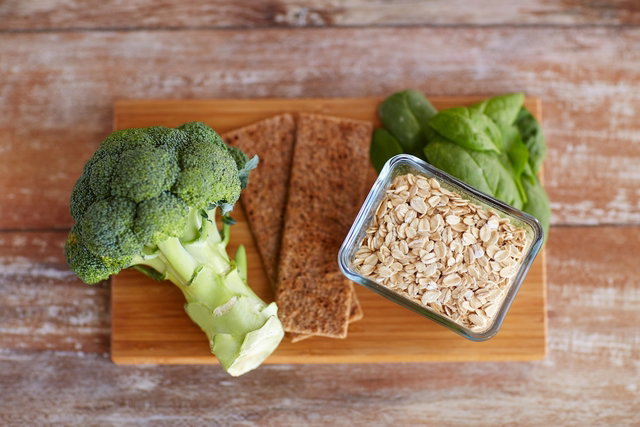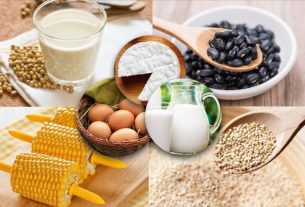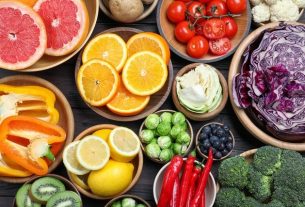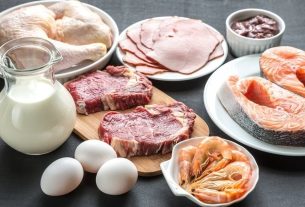Soluble fibers are a type of fiber found mainly in fruits, cereals, legumes and vegetables, which dissolve in water, forming a mixture of viscous consistency in the stomach, which increases the feeling of satiety, as the food remains in it for longer. .
Furthermore, soluble fibers help prevent constipation, as they absorb water into the stool, hydrating it and making it softer, facilitating its passage through the intestine and evacuation.
Foods contain soluble and insoluble fiber, however, what varies is the amount of each type, which is why it is important to vary foods and eat a balanced diet.
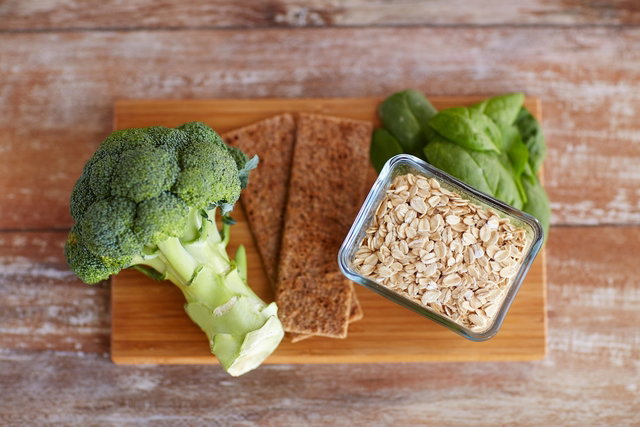
Main benefits
The benefits of soluble fiber include:
- Decreases appetitebecause they form a viscous gel and remain in the stomach longer, increasing the feeling of satiety and promoting weight loss;
- Improves bowel functionas they hydrate the fecal cake, being useful for diarrhea and constipation;
- Reduces LDL cholesterol, total cholesterol and triglyceridesbecause they reduce the absorption of fat from food, increase the excretion of bile acids and, when fermented in the intestine by bacteria, they produce short-chain fatty acids, inhibiting the synthesis of cholesterol in the liver;
- Decreases the absorption of glucose from foodbecause by forming a gel in the stomach, the entry of nutrients into the small intestine is delayed, reducing the absorption of glucose and fat, being excellent for people with pre-diabetes and diabetes;
- Reduces the risk of metabolic syndrome and avoid diseases such as irritable bowel syndrome, Crohn’s disease or ulcerative colitis;
- Reduces the appearance of pimpleswhich makes the skin more beautiful, in addition to improving the elimination of toxins from the body;
- Functions as food for bacteria good for the intestine, acting as prebiotics.
Soluble fiber is easily fermented by bacteria in the colon, which adjusts the pH and therefore inhibits the bacterial conversion of bile acids into secondary compounds with carcinogenic activity, so it is believed that this type of fiber may protect against the development of colon cancer.
Foods rich in soluble fiber
Soluble fiber is found mainly in fruits and vegetables, but can also be found in some cereals. The following table shows the amount of fiber found in 100g of cereals:
Below are the amounts of fiber in 100g of vegetables:
Below are the amounts of fiber found in 100g of fruit:
The content and degree of viscosity of the fiber will depend on the degree of maturity of the vegetable. Thus, the more mature they are, the greater the amount of certain types of soluble fiber, such as cellulose and lignin, while at the same time the content of another type of soluble fiber, pectin, decreases.
The amount of total dietary fiber consumed daily should be approximately 25g, according to the World Health Organization (WHO), and the ideal amount of soluble fiber that should be ingested should be 6 grams.
Soluble fiber dietary supplements
Dietary fiber supplements can be used when it is not possible to consume the amount of fiber needed per day and achieve the same benefits. Some examples are Benefiber, Fiber Mais and Movidil. These fibers can be found in capsules and powder, which can be diluted in water, tea, milk or natural fruit juice, for example.
Difference between soluble and insoluble fiber
Soluble fibers are those capable of being dissolved in water, forming a gel, which means they remain longer in the stomach and intestine, promoting a greater feeling of satiety and regulating sugar and cholesterol levels. Furthermore, this type of fiber is fermented by bacteria present in the intestinal microbiota, which helps to reduce inflammation and, consequently, prevent gastrointestinal diseases.
Insoluble fibers are those that do not dissolve in water and are not completely metabolized by the intestinal microbiota, however, when they reach the intestine, they increase the volume of feces and stimulate intestinal transit, helping to combat constipation. . Learn more about insoluble fibers.
Therefore, to maintain the health of the body as a whole, it is essential that foods rich in soluble and insoluble fiber are consumed on a daily basis.
Bibliography
- CLARE Adam et al. Effects of Dietary Fibre (Pectin) and/or Increased Protein (Casein or Pea) on Satiety, Body Weight, Adiposity and Caecal Fermentation in High Fat Diet-Induced Obese Rats. Plos one. 11. 5; 1-16, 2016
- ALMEIDA Elizângela et al. Synthesis and characterization of pectin derivative with antitumor property against Caco-2 colon cancer cells. Carbohydrate Polymers – Journal. 115. 139-145, 2015
- CHUNG Wing et al. Prebiotic potential of pectin and pectic oligosaccharides to promote anti-inflammatory commensal bacteria in the human colon. Microbiology Ecology. 93. 11; 1-9, 2017
- SYMPSON H et al. Review article: dietary fibre-microbiota interactions. Alimentary Pharmacology & Therapeutics. 42. 2; 158-179, 2015
- REDONDO Luis. The therapeutic fiber. 2nd. São Paulo: Byk Química, 63-67.
- PINTO John. Nutraceuticals and functional foods. 1st. Portugal: LIDEL, 2014. 50-51.

Sign up for our newsletter and stay up to date with exclusive news
that can transform your routine!
Warning: Undefined array key "title" in /home/storelat/public_html/wp-content/plugins/link-whisper-premium/templates/frontend/related-posts.php on line 12
Warning: Undefined array key "title_tag" in /home/storelat/public_html/wp-content/plugins/link-whisper-premium/templates/frontend/related-posts.php on line 13

